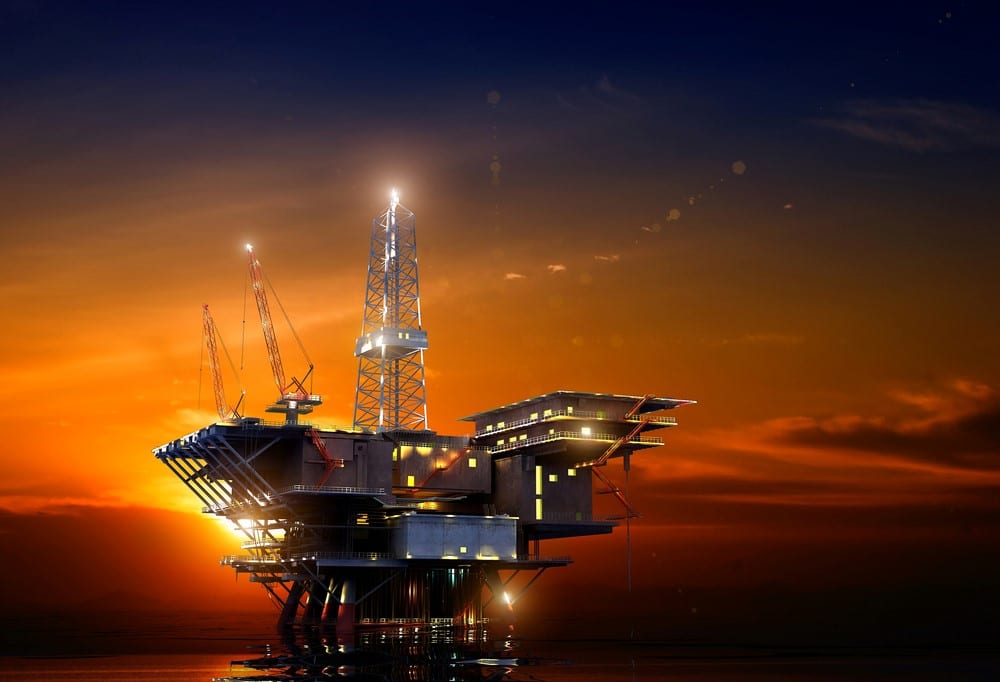
Manager's Guide to Additive Manufacturing in the Oil and Gas Sector
$347.50
| Select User License | Single User License (one computer) |
|---|
Request Excerpt
Chapter One: Introduction to Additive Manufacturing for the Oil and Gas Industry
1.1 How Oil and Gas Industry Dynamics Affect Adoption of AM
1.1.1 Why Oil and Gas Supply Chain Companies Attract AM
1.1.2 The Need to Ensure the Reliability of 3D Printed Oil and Gas Parts and Processes
1.2 Why Invest in Additive Manufacturing?
1.2.1 Oil and Gas Companies are Ready to Spend on Additive Manufacturing
1.2.2 Keeping the Supply Chain Optimized with New Technologies
1.2.3 Pressure on the Supply Chain
1.3 Who Will Adopt Additive Manufacturing in the Oil and Gas Industry?
1.4 How Far Along are You in the AM Adoption Model for Oil and Gas?
1.5 Why Should You Introduce AM in Your Supply Chain?
Chapter Two: Learning to 3D Print in Oil and Gas: the Additive Manufacturing Systems
2.1 Overview of AM Hardware Adoption by the Oil and Gas Industry
2.1.1 AM Technologies for the Oil and Gas Industry Considered in This Report
2.1.1.1 Looking Further Down the Line at Future Technologies
2.1.2 Why Should You Invest in an Additive Manufacturing System?
2.1.2.1 Do Away with Expensive Tools
2.1.2.2 Enjoy Complete Freedom of Geometry
2.1.2.3 Do Away with Time Consuming Sub-assemblies (and Related Costs)
2.1.2.4 Do Away with Physical Inventory (and Related Costs)
2.2 Getting Familiar with the Primary Metal AM Technologies that can be Used for Oil and Gas Applications
2.2.1 The Three Primary Metal AM Technologies that you Need to Know
2.2.1.1 Powder Bed Fusion
2.2.1.2 Directed Energy Deposition
2.2.1.3 Metal Binder Jetting / Bound Metal
2.2.2 Transitional AM Technologies
2.2.2.1 Bound Metal Filament Deposition Desktop Systems
2.2.2.2 Sand-based Binder Jetting for Casting
2.3 Polymer AM for Oil and Gas Applications of which You Need to be Aware
2.3.1 Latest Evolutionary Trends in Polymer AM Hardware
2.3.1.1 Polymer Powder Bed Fusion Will Be Used for Final Part Production
2.3.1.2 Photopolymerization Can Serve Several Different Purposes
2.3.1.3 Material Extrusion: the Differences Between Pellets and Filaments
Chapter Three: Learning to 3D Print (Part 2): Which Materials Can You Use?
3.1 Latest Materials Developments
3.2 Which Metals Can You Use to 3D Print Oil and Gas Parts?
3.2.1 3D Printing with Steel and Steel Alloys
3.2.1.1 Steels Binder Jetting for Mass Production
3.2.2 3D Printing with Nickel Alloys
3.2.3 3D Printing with Cobalt Chromium
3.2.4 3D Printing with Titanium
3.2.4.1 Titanium Wire for WAAM
3.2.5 3D Printing with Other Metals (Refractories, Tungsten Carbide, Tantalum, Molybdenum, Niobium)
3.3 Polymer and Composite Materials for Oil and Gas AM
3.3.1 Where to Get the Best Polymer 3D Printing Materials for Use in Oil and Gas
3.3.2 Using Polymers and Composites to Replace Metals
3.3.3 Did You Know You Can Now 3D Print Parts of Any Size Using Composite Pellets?
3.3.4 The Multiple Uses of Digital Materials
3.3.5 Discovering the Future Opportunities of Advanced Materials for Polymer Powder Bed Fusion
3.4 3D Printable Ceramics You Need to Be Aware of for Future Applications
3.4.1 Ceramics AM Technologies for Oil and Gas
3.4.2 Direct Production and 3D-printed Casts
3.4.3 Advanced Ceramics for Oil and Gas Applications
Chapter Four: What You Can Actually Do with Additive Manufacturing in Oil and Gas
4.1 Practical Applications of Additive Manufacturing in Oil and Gas
4.1.1 Which Oil and Gas Parts Can Be 3D Printed?
4.1.1.1 Prototypes and Models
4.1.1.2 Molds, Cast Patterns, Jigs and Fixtures
4.1.1.3 Drill Bits and Drill Components
4.1.1.4 Sensors and Associated Housings
4.1.1.5 Combustion Systems and Turbomachinery
4.1.1.6 Fittings and Pump Components
4.1.1.7 Heat Exchangers
4.1.1.8 Components for Gas Processing and Refinery Operations
4.1.1.9 Catalytic Reactors and Components
4.1.1.10 Hydraulic Manifolds
4.1.1.11 Crane Hooks, Propellers and Other Large Maritime Parts
4.2 Overview of the AM Product and Process Lifecycle
4.3 Learning to Design Oil and Gas Parts for Additive Manufacturing
4.3.1 Basics of DfAM (Design for Additive Manufacturing)
4.3.2 Generating Parts with Software
4.4 The Future of Oil and Gas Will Be Additively Manufactured
4.4.1 How to Get Clear Process and Material Guidelines for Additively Manufactured Oil and Gas Parts
4.4.2 Sample Application Cases for Prototypes and Models
4.4.3 Sample Application Cases for Part Replacement and Final Parts
4.4.3.1 Accelerating Adoption
4.4.3.2 Short-term Benefits of On-Demand Part Replacement
Chapter Five: Your Key Oil and Gas Suppliers of Additive Manufacturing Services and Guidelines
5.1 Recent Activity in AM by OEC Firms
5.1.1 Saudi Aramco
5.1.2 Sinopec Group
5.1.3 China National Petroleum Corporation
5.1.4 Royal Dutch Shell
5.1.5 BP
5.1.6 Total
5.2 Recent Activity in AM by Key Oil and Gas Industry Suppliers and Stakeholders
5.2.1 General Electric
5.2.2 Siemens
5.2.3 DNV GL
5.2.4 Lloyd’s Register
5.2.5 Recent AM Activities by Other Relevant Oil and Gas Suppliers and Stakeholders
5.2.5.1 voestalpine Oil and Gas
5.2.5.2 Repsol
5.2.5.3 Woodside
5.2.5.4 Wilhelmsen and Ivaldi Group
5.2.5.5 Kennametal
5.2.5.6 Aidro
5.2.5.7 Wartsila
5.2.5.8 Equinor
5.2.5.9 Trelleborg
About SmarTech Analysis
About the Analyst
Acronyms and Abbreviations Used In this Report
List of Exhibits
Exhibit 1-1: Oil and Gas Supply Chain Dynamics for AM Parts Production
Exhibit 1-2: Aspects of the process chain and their influence on parameters of additive manufacturing process.
Exhibit 1-3: SmarTech Analysis’s Additive Manufacturing Adoption Model for Oil and Gas Markets
Exhibit 1-4: Efficiency Improvements Possible by Adopting AM into Supply Chain
Exhibit 1-5: Using AM to Address Biggest Challenges for Oil and Gas
Exhibit 2-1: AM Hardware Technologies Used in Oil and Gas and Their Primary Applications (for larger size chart see the next page)
Exhibit 2-2: Leading Metal AM Hardware Technologies and Manufacturers Used in Oil and Gas
Exhibit 2-3: Primary Polymer AM Processes and System Manufacturers
Exhibit 3-1: Relevance of Metals in Oil and Gas AM
Exhibit 3-2: Key Identified Metal AM Material Development Initiatives by Print Technology
Exhibit 3-3: Summary of Most Common Types of Steel Additive Manufacturing Powders and Processes
Exhibit 3-4: Large Format Additive Manufacturing Systems (LFAM)
Exhibit 4-1: Typical and Potential Additively Manufactured Parts by Oil and Gas Industry Segment
Exhibit 4-2: Typical Lifecycle for Materials/Products Produced Through Additive Manufacturing
Exhibit 4-3: Traditional Prototyping vs. Rapid Prototyping with 3D Printing
Exhibit 5-1: Map of Companies that Have Made Public Announcements About AM Integration into their Supply Chain Between 2016 and 2018
After a few years of evaluating and studying additive manufacturing applications, the oil and gas industry is now readying for full industrialization and implementation. After a challenging period due to dropping prices, the oil and gas sector is now ready to invest again. Additive manufacturing can provide some of the best value propositions for part production in the upstream, midstream and downstream segments, as well as energy generation.
Learning from experiences in rapid prototyping and tooling within other industries, such as the aerospace, automotive and medical sectors, many oil and gas operators and suppliers are now looking to use additive manufacturing in order to gain a key competitive edge in the production of advanced and complex final parts. The key next phase is going to be the development of clear guidelines and standards – and identify the ideal technologies and materials – for the full industrialization of additive manufacturing into the oil and gas manufacturing workflow.
Due to its great engineering challenges, its massive global scale and part size requirements, the oil and gas industry is slated to become the next great additive manufacturing adoption segment over the next decade. SmarTech has identified oil and gas industry part an services suppliers as the primary customers investigating this market and developed this Manager’s Guide to help facilitate the journey.
This Manager’s Guide Will Include:
- The guidelines for process an part requirements for additively manufactured oil and gas parts
- An overview of the hardware technologies that are ideally suited for oil and gas part production.
- An in-depth discussion on the various applications within the different segments of the oil and gas supply chain: upstream, midstream and downstream.
- A critical analysis of the advantages from implementing additive manufacturing in rapid and multiple iteration prototyping, tooling (including jigs and fixtures) and direct part production
- A detailed analysis of the types of parts that can be produced with additive manufacturing in oil and gas.
- A discussion of the key materials (including primarily metals but also polymers, ceramics and composites) that can be used in additive manufacturing of parts for oil and gas applications.
This report is directed toward the end user market, the companies who are active users of additive manufacturing or considering its adoption. While suppliers of additive manufacturing may find the report useful this study differs from our related study, The Market for Additive Manufacturing in the Oil and Gas Sector 2018-2029 which provides broader analysis and forecasting of the addressable market for the supply chain.

